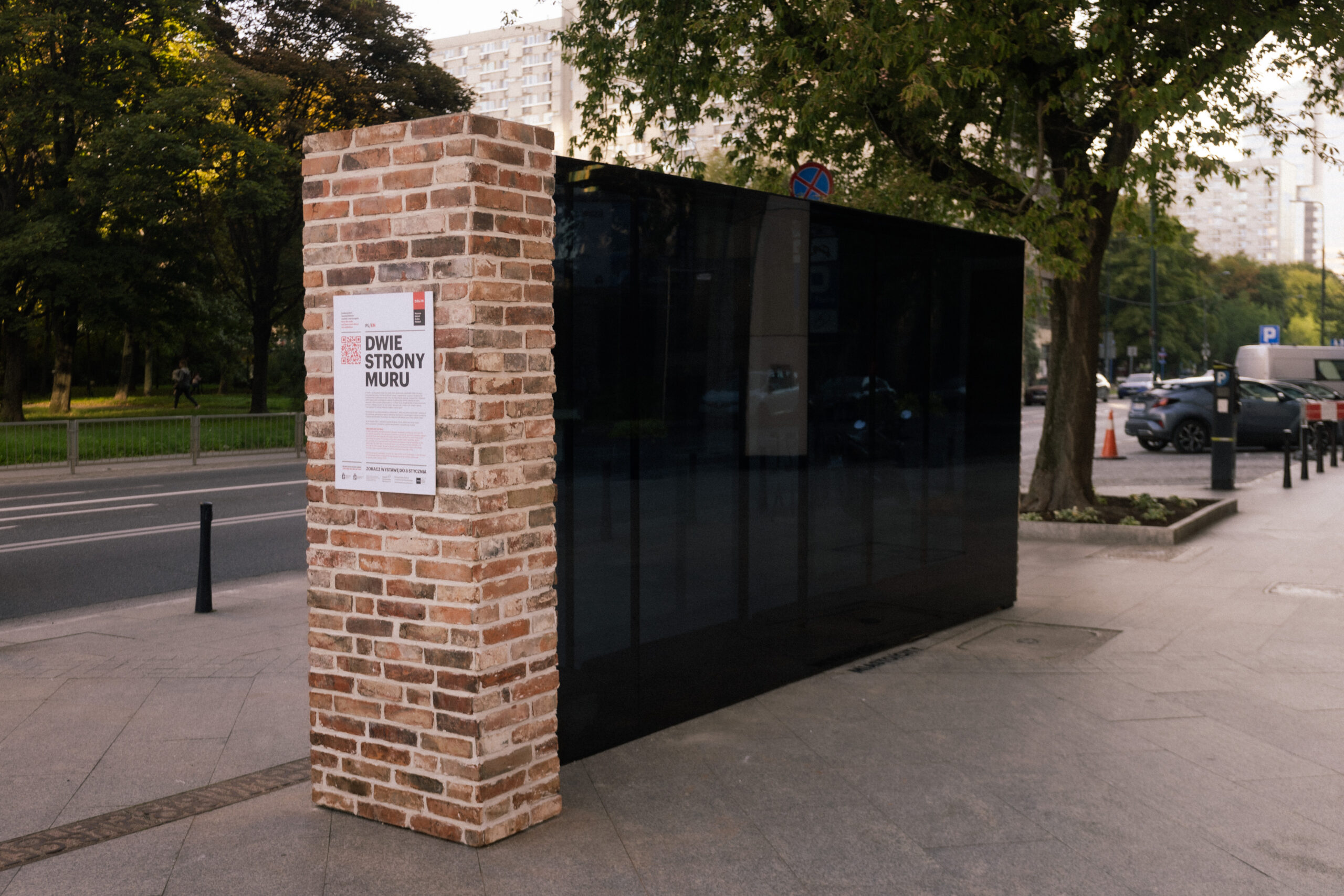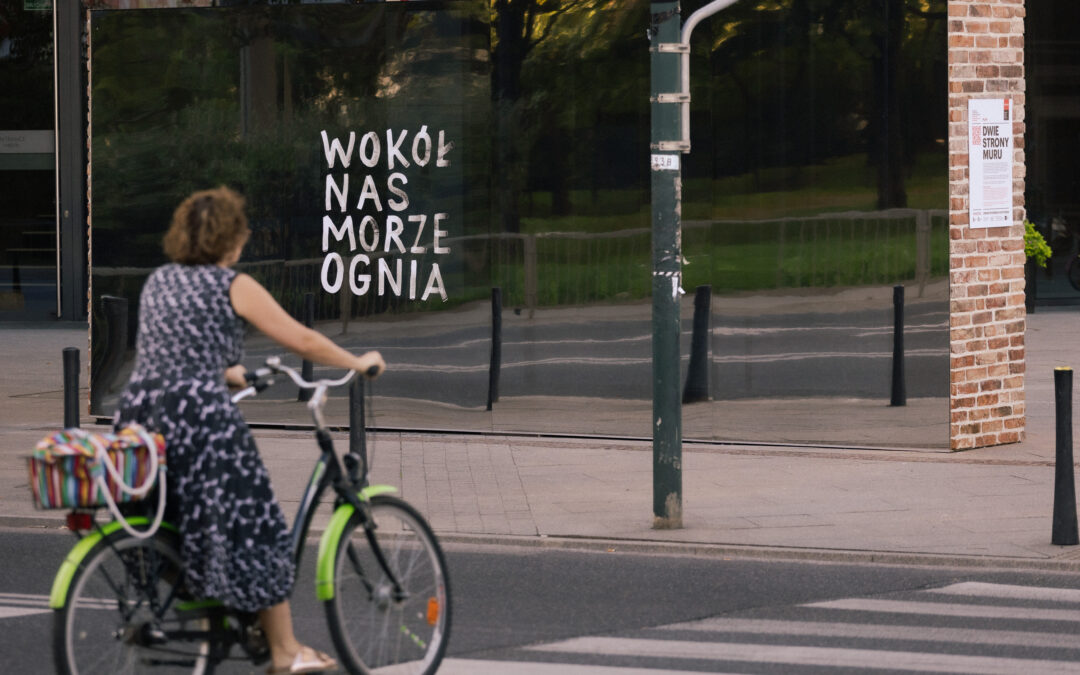A one-way mirror has been placed on the location of the wall that surrounded Warsaw’s Jewish ghetto during the wartime Nazi-German occupation.
The installation, located on the corner of Grzybowska and Żelazna Streets, allows those standing on what was the “Aryan side” of the wall to look through it, while those on the Jewish side see only a reflection of themselves.

The temporary work – designed by Saatchi & Saatchi and erected earlier this month by the city’s POLIN Jewish history museum with the financial support of the municipal authorities – is part of the commemoration of this year’s 80th anniversary of the Warsaw Ghetto Uprising.
“In 1940, a ghetto wall was erected in Warsaw, isolating the Jews completely from the non-Jewish population,” notes POLIN. “The wall grew to become a symbol of oppression, loneliness, despair and brutal force used against defenceless people.”
A text embedded in the mirror says “Around us a sea of fire”, the name of an exhibition at POLIN presenting the stories of Jewish civilians during the ghetto uprising. Scanning a QR code on the side of the installation plays a podcast based on diaries of people in hiding during the uprising.
New photographs from the Warsaw Ghetto Uprising have been released after being discovered in an attic by the family of a Polish firefighter who smuggled a camera into the ghetto to secretly take them https://t.co/jtkUUMvmBl
— Notes from Poland 🇵🇱 (@notesfrompoland) January 19, 2023
“We want to recall the memory of these tragic events from the perspective of their participants,” POLIN’s spokeswoman, Marta Dwiewulska, told the Polish Press Agency (PAP). “The purpose of this installation is to recall the history of the 50,000 Jewish men and women locked inside the ghetto.”
“We wanted to take passers-by out of their daily rush, at least for a moment, to make them stop and be alone with themselves, isolated from the outside world,” she added.
Warsaw’s ghetto was the largest created by Nazi Germany. At one point it held around 460,000 Jews captive in an area of 3.4 square km (1.3 square miles).
A mural of women who fought in the Warsaw Ghetto Uprising has been unveiled in the city.
Today's anniversary events were dedicated to the "essential but forgotten" role played by women in what was the largest act of Jewish resistance during the Holocaust https://t.co/vdSOTX8RKb
— Notes from Poland 🇵🇱 (@notesfrompoland) April 19, 2021
In 1943, the Germans began the liquidation of the ghetto, deporting its inhabitants to the gas chambers of Treblinka extermination camp. That prompted Jewish underground fighters to launch an uprising that began on 19 April 1943 and became the largest single act of Jewish resistance during the war.
Hundreds of Jewish fighters, with support from the Polish underground resistance, took on the might of the German army for almost a month before being brutally suppressed.
Thousands of Jews were killed during the uprising, with tens of thousands more deported to extermination camps afterwards. The ghetto was then razed to the ground.
The presidents of Poland, Germany and Israel have jointly commemorated the 80th anniversary of the Warsaw Ghetto Uprising.
During his visit, Germany's president was handed a copy of Poland's claim for war reparations by a Polish government minister https://t.co/KRGRvnk8rS
— Notes from Poland 🇵🇱 (@notesfrompoland) April 19, 2023

Notes from Poland is run by a small editorial team and published by an independent, non-profit foundation that is funded through donations from our readers. We cannot do what we do without your support.
Image credit: M. JAŹWIECKI / MUZEUM HISTORII ŻYDÓW POLSKICH (press materials)

Daniel Tilles is editor-in-chief of Notes from Poland. He has written on Polish affairs for a wide range of publications, including Foreign Policy, POLITICO Europe, EUobserver and Dziennik Gazeta Prawna.



















